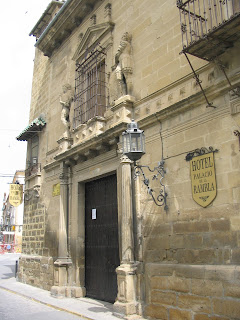Pottery from Úbeda is rightly renowned
throughout Andalusia and the rest of Spain.
 |
| Pottery from Ubeda, Spain |
This craft has a long history in the town,
drawing on many differing strands and influences – the Romans and the
Renaissance, but most of all the Arabs. You only have to walk into a potter’s
studio in Úbeda to feel the blend of Hispanic and Arab cultures that is
concentrated there.
Instead of browsing standard gift shops, my
recommendation is a visit to one of the potters themselves, with a chance to
view their workshop, kiln and exhibition. Some are now located in the pats of
town that are most frequented by tourists (i.e. around the Town Hall and
Parador), but most remain in their traditional area along Calle Valencia in the
lower reaches of Úbeda. This location was originally due to the abundance of
water that was available there (a key component in the production process) and
the fact that the smells, etc, from their kilns were thus kept away from the
town centre.
 |
| Pottery from Ubeda, Spain |
These days many potters combine traditional
designs and techniques with dashes of modernity, and there’s nothing like
holding and using such a beautiful piece of craftsmanship. If you’re looking
for a gift that’s typical of the area and you won’t regret buying once you get
it home (!), look no further.












